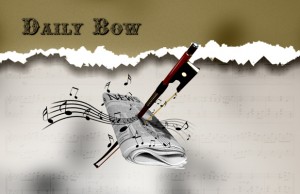It seems that, although the United States and Canada share a border and many cultural touchstones, many Americans are not as up-to-speed on goings-on in Canada as one might think. Most Americans have no idea when Canadian Thanksgiving is or what goes on in your average hockey game. The same general fogginess seems to apply to American knowledge of the arts scene in Canada, which is, to the nation’s credit in hard times, thriving and well-supported. Canadian artists often occupy less of the spotlight in the States than do their American (and even European and Asian) counterparts, and the average American musician might be hard-pressed to enumerate any of the many Canadian arts programs, and that’s a shame. As the United States moves further into economic hard times, the musical climate of the nation is one that is tinged with great struggle. Is there something that we could learn from our neighbors to the north?
A quick look at Canada’s National Arts Centre offers a glimmer of what the United States might take from Canadian examples. The National Arts Centre itself was built in Ottawa as part of the 1967 celebration of Canada’s centenary, and it was founded with the intention of providing its community with exposure to world-class artists in a wide variety of artistic disciplines, ranging from dance to music to French and English theater. It remains one of the largest performing arts spaces in Canada, and it is also the only multidisciplinary, bilingual performing arts center in North America. Most notably to classical musicians, the National Arts Centre is home to the National Arts Centre Orchestra, which was founded in 1969 with Jean-Marie Beaudet as Director of Music and Mario Bernardi as founding conductor and (from 1971) Music Director until 1982. Beaudet was succeeded by Franco Mannino (1982 to 1987), Gabriel Chmura (1987 to 1990), and Trevor Pinnock (1991-1997). In April 1998, Pinchas Zukerman was named Music Director of the NAC Orchestra.
While many performing arts centers are, of course, home to symphonies, the NAC and its orchestra present a unique and laudable take on the symbiotic relationship. The NAC and its orchestra are both committed on a very deep level to fostering national music education, and, to this end, the orchestra maintains a very active touring schedule in addition to its full subscription season in Ottawa. Mr. Zukerman’s arrival as Music Director has propelled the NAC Orchestra even further in its educational goal. He has led the orchestra on tours within Canada in 1999, 2002, 2004, 2005, 2006 and 2008, to Europe and Israel in 2000, and the United States and Mexico in 2003, incorporating a spate of educationally-oriented activities that run the gamut from masterclasses and question-and-answer sessions to sectional rehearsals with youth and community orchestras and student matinees. Teacher Resource Kits have been developed for distribution to elementary schools in the regions toured and across Canada, and the public has been able to follow each tour through fully interactive websites which are now archived on the NAC’s Performing Arts Website at www.artsalive.ca.
The NAC’s zeal for musical education doesn’t stop there:
In 1999 Pinchas Zukerman initiated the NAC Young Artists Program, which is now part of the NAC Summer Music Institute (SMI) including the Conductors Program founded in 2001, and the Composers Program founded in 2003. Over eleven years the SMI has provided training with an international faculty headed by Zukerman to 669 participants from 36 countries. In 2007, Pinchas Zukerman launched the Institute for Orchestral Studies, a season-long program charged with developing highly talented musicians for orchestral careers. Other Orchestra education activities at home include Musicians in the Schools, student matinees and open rehearsals, and masterclasses. Since the arrival of Pinchas Zukerman, the Orchestra is also exploring education through long-distance Broadband videoconferencing, and increased use of the Internet.
Notable this season is a collaboration between the National Arts Centre Orchestra and the international charity “Free the Children,” which was founded by child-poverty activist Craig Kielburger. The collaboration features a tour of Atlantic Canada and heavily emphasizes the role of children in classical music, incorporating a children’s-perspective presentation on how singing can change communities, a matinee performance of a special interactive concert, and performances by many of Canada’s most talented young performers. The Free the Children presentation through the National Arts Centre is entitled “Building Community through Music.” In the Kielburger’s words, music is a special tool for social change, largely because
Music is truly universal and breaks down barriers. We can’t go to a single community without it. Every time we visit a village, we’re greeted with music….It’s more for pure enjoyment here, but in developing countries, it’s also how one educates. We use music to educate youth about HIV and AIDS, and how they can protect themselves. It’s a lot easier, sometimes, to use music to share information, when you can present the message as a song.
This collaboration between two highly educational potent organizations promises to be a great one, and the example that it sets for Canada’s southern neighbors is a strongly instructive one.
Read all about Kielburger’s presentation here.















No comments yet.